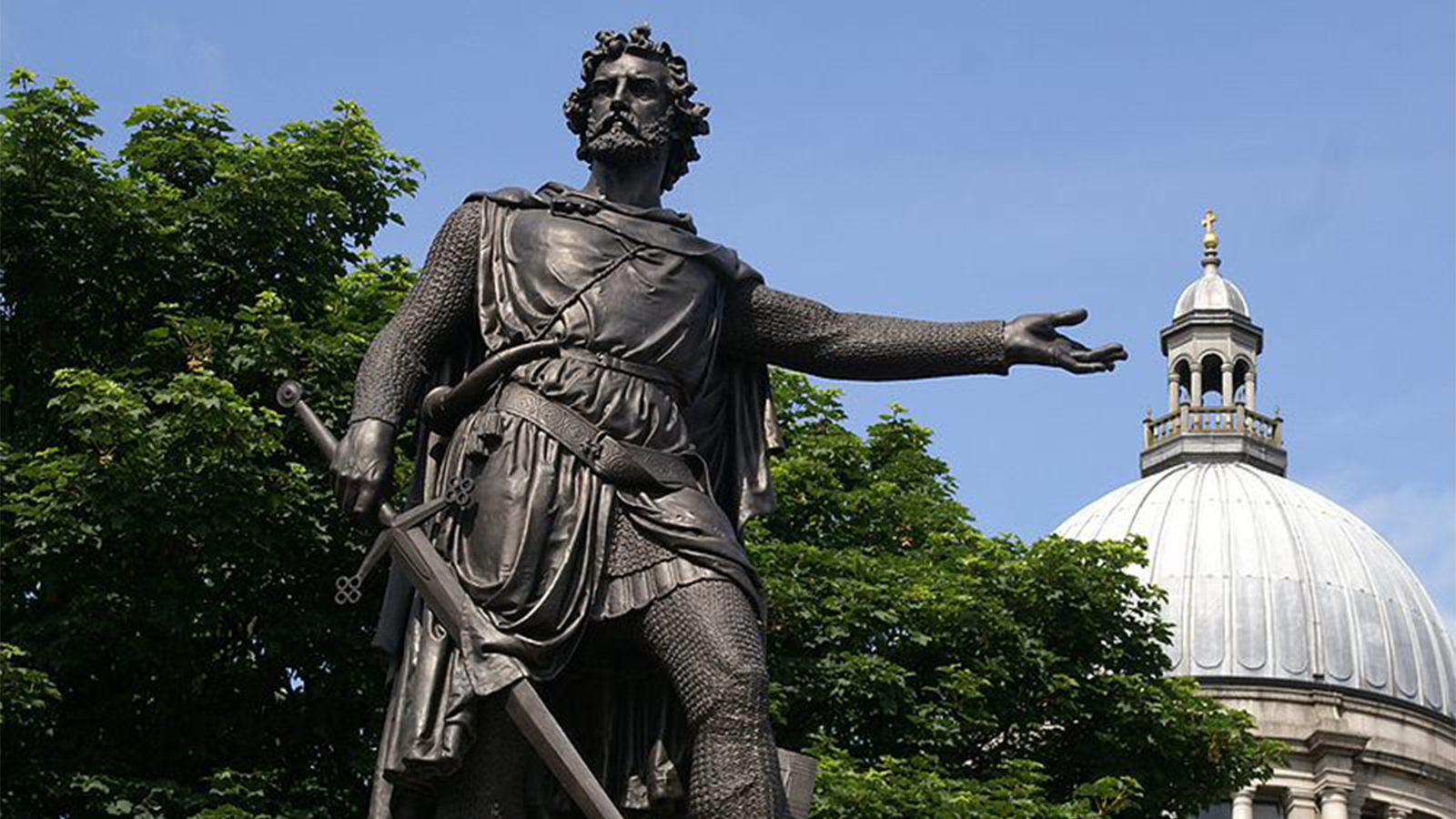The man, the myth, the legend: William Wallace

Happy Thursday guys!
This week's edition comes as a special request from my wee brother! He's a massive fan of Horrible Histories and his favourite horrible histories song is about William Wallace...
Flashback
Before we crack into who William Wallace was, I thought I should give a bit of background about why he was fighting for freedom in the first place…
Scotland was its own independent nation and that was never really an issue until 1286 when King Alexander III died. He left his 3-year-old granddaughter, Margaret maid of Norway, as heir to the throne. Unfortunately, when she made the journey from Norway to Scotland at the age of 7, she became gravely ill and died on the Isle of Orkney and was never inaugurated. Her death cast a question over who was the rightful heir and a total of 13 men laid claim to the throne.
King Edward I was asked to arbitrate the the claims to the throne and John Balliol was annoited as the rightful King of Scots in 1292.
Edward I plays dirty
So after only a few years of Balliol as the King of Scots, Edward stepped in and forced him to abdicate his throne in 1296. Then Edward declared
The Scots were fiercely independent and were very opposed to Edward's rule. After a year of English rule, in May 1297, William Wallace led a group of 30 men to burn a Scottish town and kill its English sheriff in an act of rebellion.
Wallace then rallied a local army and attacked English strongholds along the Forth and Tay rivers.

Rebellion
Wallace continued to rally more men to join the fight and was confronted by the English in the Battle of Stirling Bridge on September 11th 1297 ⚔️
Although Wallace's men were incredibly outnumbered, they managed to clinch a victory from the English and seize Stirling Castle. They had managed to massacre the English as they crossed the small bridge across the river and for a brief period, Scotland was nearly free of the occupying English forces.
With success on their own land, Wallace decided to invade Northern England and ravaged the counties of Nortumberland and Cumberland.
Their tactics were brutal. Wallace even reportedly flayed an English soldier and kept is skin as a trophy.... gross.

Glory days…
Wallace and his men returned to Scotland in December 1297 as heroes. Wallace was knighted and proclaimed the guardian of the kingdom, deposing the King's name.
… Not so glory days
After only 3 months, Edward I returned to Scotland and invaded Scotland again in July 1298. The Scots surrendered at the Battle of Falkirk.
This event ruined Wallace's military reputation and led him to resign his guardianship. Instead he served as a diplomat, trying to gain support for the Scottish rebellion abroad.
Although Wallace had some success with the French, they eventually turned against him and the Scots capitulated in 1304 and recognised Edward as their king.
A rebel to the end
Wallace refused to submit to English rule and was pursued by Edward's men until he was captured near Glasgow on August 5th 1305.
From there, he was taken to London and charged with treason. Wallace was adamant that he could not be found guilty when he had never sworn allegiance to Edward in the first place 🤷♀️ ... unfortunately that defence didn't play out well in court...
He was found guilty and sentenced to death but by no means was this an ordinary death! He was...
1) Hanged
2) Disemboweled
3) Beheaded
4) Quartered
AND as if that wasn't enough, his head was displayed on a pike at London Bridge and his limbs displayed in Newcastle, Berwick, Sterling and Perth. A harsh warning to other rebels I guess.
King Edward must have really hated the guy.
His tactics were ruthless but he was dedicated to FRRRREEEEDOOOOMMMM 🏴 The Scots regained their freedom 23 years after Wallace's death with the Treaty of Edinburgh in 1328. So I'd say his efforts were not in vain.
Hope you enjoyed reading about the famous Scottish rebel! See you again next week 👋
Hannah